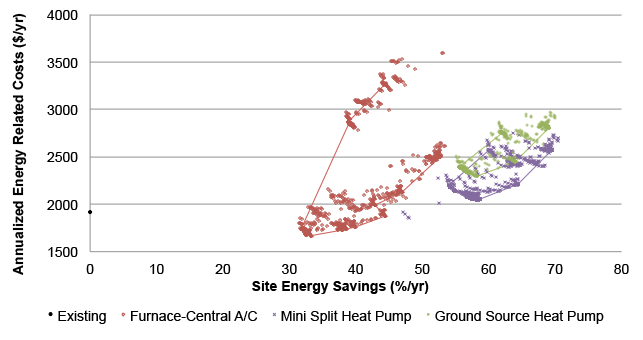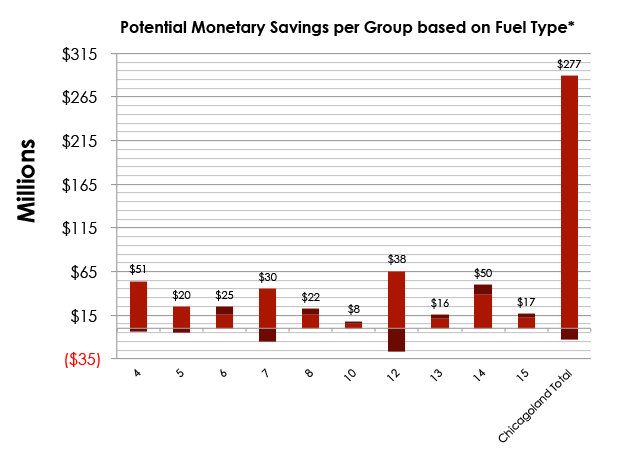Chicagoland housing retrofits
Optimization of whole house retrofit packages for targeting 50% annual energy use reductions in pre-1978 Chicagoland homes
Work conducted by: Honnie Leinartas, MS CE 2014
New standards and guidelines for energy consumption for the various building sectors in the United States are being developed by organizations such as the US Department of Energy and others. These typically include goals for all existing residential buildings to pursue deep energy retrofits that reduce their energy consumption by at least 50% relative to the regional average for the 2005 stock of that particular building type by the year 2030. To better inform these energy savings goals, this work used whole building energy simulation and optimization to construct a “tool-box” of prescriptive deep energy retrofit solutions that can be applied to a large portion of a subset of the housing stock responsible for a significant portion of residential energy use in the Chicagoland area: existing single-family detached homes built prior to 1978.
Ten typology groups of pre-1978 single-family homes were considered for energy retrofit package optimization with a target of 50% annual site energy reductions. Simulations were conducted as a two-step process using sequential search optimization functions in BEopt and EnergyPlus as the simulation engine. First, optimizations of the building enclosure for each typology were performed and the combined highest efficiency, least cost packages were applied to the base models. Second, optimizations based on the modified base models were performed using several heating, ventilation and air-conditioning (HVAC) system options, and an optimal cost-effective package was chosen for each typology based on maximizing annual energy reductions, payback periods, and modified internal rates of return (MIRR). Example outputs for one group of homes is shown below:
Results reveal that prescriptive deep energy retrofit solutions can indeed be defined for each typology that achieve at least 50% site energy reductions, largely through common envelope retrofit measures for all groups and either upgrades to existing HVAC system efficiency or a conversion to mini-split heat pump (MSHP) systems. A scaling analysis suggests that widespread application of the prescriptive deep energy retrofit solutions described herein to the entire Chicagoland residential building stock could save between $400 and $1300 on energy costs per year per home, depending on typology, summing to a total of approximately $280 million per year in savings across all Chicagoland homes.
Download original BEopt and WUFI input files:
- original_BEopt_files (127 mb zip)
- original BEopt .csv files (28 mb zip)
- original_WUFI_files (8 mb zip)
- origina_WUFI_files (2 mb PDF)
Download Honnie’s thesis:
- leinartas_masters_thesis_July_2014 (11 mb PDF)



